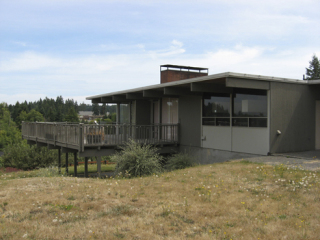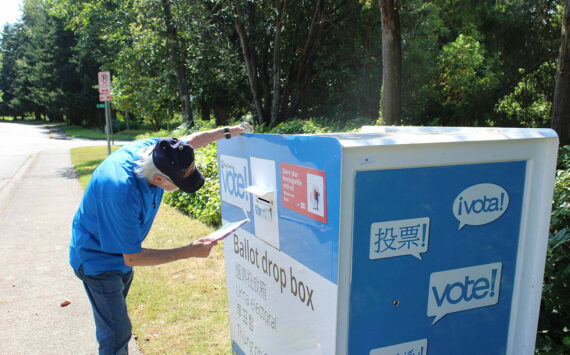EDITOR’S NOTE: On May 26, the Washington Trust for Historic Preservation announced its annual list of Washington State’s Most Endangered Historic Places. The list dates back to 1992, and aims to raise awareness of historic properties that face demolition by redevelopment or neglect. Over the past 17 years, according to the Trust, more than 100 have been nominated by concerned citizens and organizations across the state. The organization also assists historic preservation advocates in developing strategies aimed at removing these threats.
This year’s list includes Curran House (University Place); Alki Homestead Restaurant (Seattle); BF Tabbott House (Bainbridge Island); Bush House (Index); George Carmack House (Seattle); Day Block (Dayton); Old Ellensburg Hospital (Ellensburg); Libbey House (Coupeville); Post-Intelligencer Globe (Seattle); Sand Point Naval Station (Seattle); St. Edward’s Catholic Church (Shelton); Surrey Downs (Bellevue); Vashon Elementary Gymnasium (Vashon Island).
Last week, the Index began publishing a profile of each endangered property, as compiled by the Trust. Here is what the Trust has to say about the Curran House in University Place.
– – – – – – – – – – – – – – – – – – – – –
It may seem a rare instance when the technology-centered mindset of the Puget Sound Region can blend seamlessly with the rich fruit growing heritage of eastern Washington, but it can be argued that the Curran House in University Place provides just such an experience. Architecturally, the Curran House is a fine example of mid-century modern design. Robert B. Price, noted as the first architect from Tacoma to be inducted to the AIA College of Fellows, designed the house in 1952. But what sets it apart, and provides the agricultural connection, is the setting: the house is situated within an orchard providing a unique example of early western Washington apple horticulture. This combination deems the property eligible for listing in the Washington Heritage Register, and if listed, would be the first Price-designed resource to achieve such designation.
In the early 1990s, Pierce County purchased the property and the existing house from the original owners with funds from the countys Conservation Futures program for use as parkland. The guidelines of the program require that the property, as well as the house, be used for horticultural and educational purposes in perpetuity. After incorporating as a city in 1995, University Place assumed control of the property. The city leased the Curran House for some time, but the structure has sat vacant for over a year.
In 1999, University Place developed a Master Plan for the park in order to evaluate future uses and programs at the site. Of the several scenarios included in the plan, each called for retaining the Curran House based on findings that the building could serve a useful function and was an integral part of the property as a unit. Despite this planning document, the city is currently debating whether or not to demolish the structure, citing a variety of costs related to repairs, security, and utility bills as barriers to rehabilitation. Given the lack of funds, the responsibility has fallen on the community to provide money for needed improvements and ongoing maintenance.
– – – – – – – – – – – – – – – – – – – – –
For more information on the Trust, visit http://www.wa-trust.org .
For earlier Index coverage of the Trust, click on the following links:
1. In an old hilltop mansion, a strong voice for preservation (04/14/09) — http://www.tacomadailyindex.com/portals-code/list.cgi?paper=88&cat=23&id=1528102&more=0 or http://www.wahmee.com/tdi_wa_trust.pdf .
2. Long list of concerns for Washington State preservationists (05/29/08) — http://www.tacomadailyindex.com/portals-code/list.cgi?paper=88&cat=23&id=1228444&more=0 or http://www.wahmee.com/tdi_jennifer_meisner_qa.pdf .
– – – – – – – – – – – – – – – – – – – – –
The Index has a blog. Visit us at http://i.feedtacoma.com/TDI-Reporters-Notebook/





